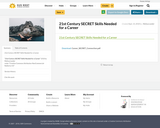
21st Century SECRET Skills Needed for a Career.
- Subject:
- Education
- Material Type:
- Activity/Lab
- Homework/Assignment
- Date Added:
- 09/14/2018

21st Century SECRET Skills Needed for a Career.
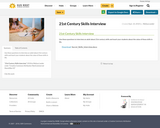
Use these questions to interview an adult about 21st century skills and teach your students about the value of these skills in life.
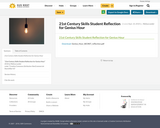
21st Century Skills Student Reflection for Genius Hour
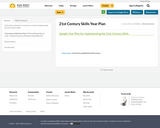
A Year plan to guide your classroom or school in implementing the 21st Century Skills

Find mini lessons and anchor charts for Grades 6-9 based on The Writing Revolution's sentence-level activities.This resource has everything you need to start using The Writing Revolution at the sentence-level in your classroom or school. We recommend that you have a copy of this book to use as a support in your classroom to assist with implementation (especially if you are the ELA teacher). This is an outstanding resource.
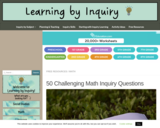
Found herein:
50 Question Open Ended Questions for students from grades 3-9 that could be used as a jumping off point for relating Math to everyday life with student driven inquiry.
From the Website:
Math is one of those subjects – you either love it or you hate it. Despite the challenges, incorporating inquiry learning into a structured math program can be done.
Creating opportunities for math inquiry can be as simple as pulling out a box of manipulatives, such as blocks, measuring tools, dice, or an iPad. Alternatively, role-playing can be a fun way of structuring math learning into real-life scenarios.
The more kids see math applied in their everyday life, the more comfortable they will become with math concepts. For example, grocery shopping, giving change or calculating a discount on an item.
The following questions will hopefully help you incorporate deeper thinking during math class, and help inspire you to conjure up some math inquiry investigations of your own.
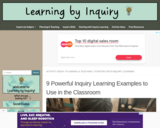
The inquiry learning examples below will give you some ideas for launching a successful project or unit with your students. Moreover, they are engaging, motivating, and challenging for all grade levels.
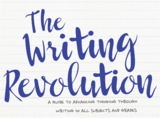
Find mini lessons and anchor charts for each grade level (K-2, 3-6, 7-9 & 10-12) on The Writing Revolution's sentence-level activities, note-taking strategies, a sequence for teaching a single paragraph and multiple paragraph compositions with activities and examples. An implementation plan is provided, as well as how to infuse writing into math, along with pacing guides and other lesson ideas. This resource has everything you need to start using The Writing Revolution at the sentence-level, note-taking, paragraph and mutiple paragraph writing strategies in your classroom or school. We recommend that you have a copy of this book to use as a support in your classroom to assist with implementaiton (especially if you are the ELA teacher). This is an outstanding resource.
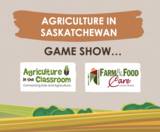
A competitive and interactive quiz game that tests your student's knowledge about agriculture. It is a fun and engaging way to challenge students to see who knows the most about how our food is made, agriculture, and much more, in a classroom or at home. With beginner, intermediate, and expert levels it can be used for a variety of different age levels.
When you click "view resource" it will download a PowerPoint for you. Check the bottom of your screen.

Help students discover the exciting and diverse range of opportunities in Saskatchewan's agriculture industry.
In this course, students will learn about career pathways available in Saskatchewan's agriculture industry by taking a tour of relevant industry websites.
Module titles include:
- Find Your Field in Agriculture
- Curious About Canola
- Possibilities in Pork Production
- Explore Olds College of Agriculture and Technology Programs

Students will explore the many careers in agriculture by playing the agriculture version of the popular game, Pictionary.

These interactive, online learning labs cover a variety of topics, including: Environment, Food, Food Waste, Tech + Innovation, Careers and more! Have fun exploring these agriculture and food-related topics.
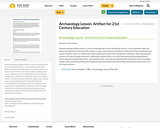
Students working collaboratively on a mini-archaeology dig to locate and identify artifacts, create hypotheses about the objects and what information they tell us about a society, and research past artifacts to determine if their hypotheses were correct. Students had to use collaboration when working on the dig, when creating their hypotheses, when measuring the artifacts, and when forming conclusions. Additionally, students had to use critical thinking when formulating theories, researching and reviewing data online, assessing their ideas, analyzing and comparing their hypotheses with archaeology studies online, and when justifying their hypotheses (and proving them) with the artifact data they discovered online, and forming conclusions.

Introduction to Career Education for teachers

An inquiry-based project to map the land in your community. The key concepts in this unit are grounded in Indigenous beliefs of interconnectedness, connectedness, and respect for all things.
The driving inquiry questions for this unit are:
1. How can respect for the land be shown?
2. What do we look for when setting up a camp?
3. What stories or teachings are connected to key locations in and around our community?
4. How has the land around our community changed over time?
5. Who do we share our community’s lands with?
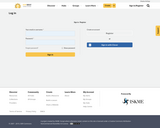
Students examine consumer choices and fair trade in this excellent grade 7/8 project. Choices are available for I DO, WE DO and YOU DO.
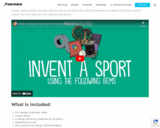
By signing up with your email address and clicking the yellow subscribe button, you will receive this great design thinking project that your students will love! It is part of a design thinking toolkit and includes a free design thinking project, an eBook, and a suite of assessments. You will also receive a weekly email with free, members-only access to the latest blog posts, videos, podcasts and resources to help you boost creativity and spark innovation in your classroom.

Milk, leche, lait. No matter what you call it, real milk offers tons of nutrition and is sustainably produced—and we've got the receipts. Come behind the scenes on a tour of a virtual dairy farm. There are 5 sections to work through, when you complete the section, your milk jug fills up!!!
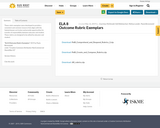
These 4 point rubric exemplars were developed to provide a consistent and common resource that aligns with the Saskatchewan curriculum and provide opportunities for transfer of responsibility between educator and student. These rubrics are designed to be edited by educator and student.
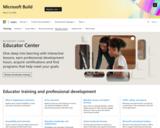
Training modules teach you how to customize and use microsoft technologies for individualized learning needs.